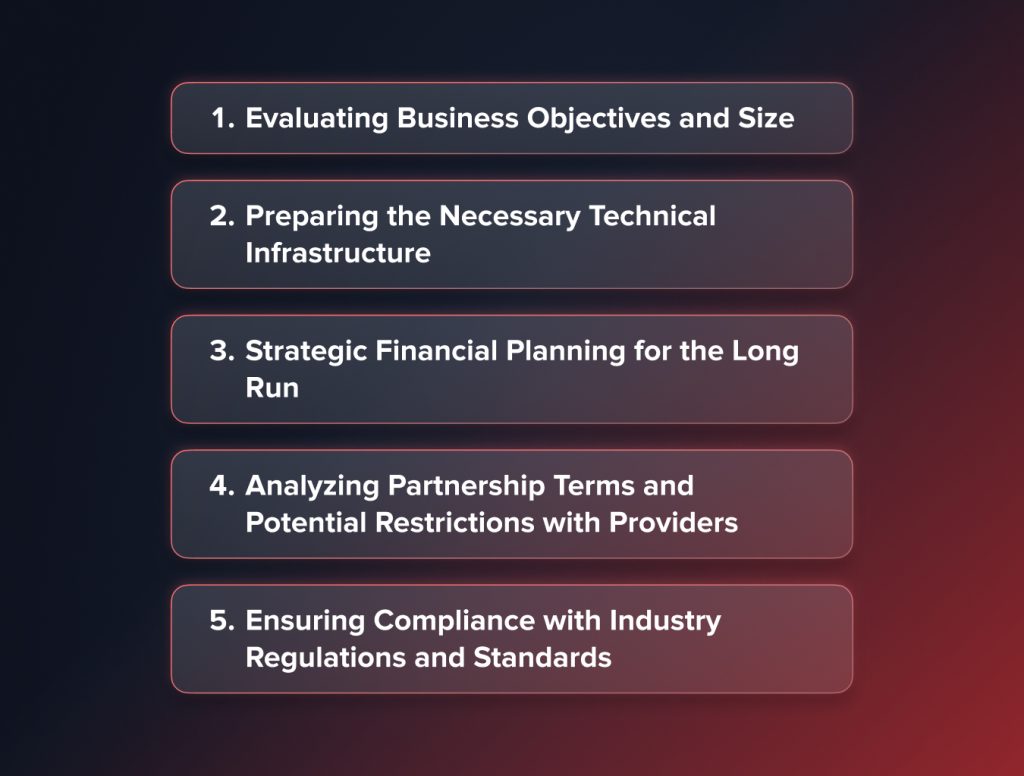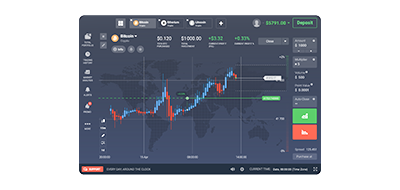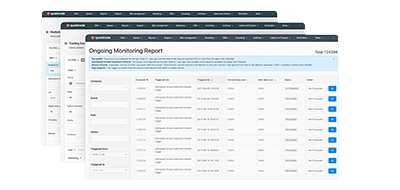Back
Contents
What is an MT4 White Label, and How Much Does it Cost?

White Label
A White Label MT4 has revolutionized the sector by enabling smaller companies to venture into trading. It is essentially a version of the MT4 platform offered by a broker or tech provider devoid of logos or branding. This allows buyers to customize it with their logos, colors and branding elements. By leveraging this option, smaller firms avoid the need to build their trading platforms from scratch saving them resources and time.
The New MT4 Requirements
The strong presence of MT4 across the industry shows its worth. However, getting a White Label MT4 has become more difficult these days because of new legal requirements. Even though MT4 is well-liked, it may not be the best choice now for new brokers, especially from countries with less strict regulations. If you want to establish your own brokerage business, it’s worth taking a closer look at platforms like Quadcode. It can save you money and resources and serve as a viable alternative given the current MT4 white label requirements. But if your heart is strictly set on MT4, this guide is for you.
The latest news in the Forex market indicate that MetaQuotes has tightened the rules for brokers wanting a White Label MetaTrader. This is particularly problematic for new brokers in countries like Saint Vincent and the Grenadines or Vanuatu, known for their FX investments but with little regulation.

While MT4 has an excellent reputation, times are changing. New platforms offer similar features without the hard-to-meet rules. Always watch the industry’s changes and make the best choice for your needs.
Understanding MT4 White Label Solutions
The MT4 White Label is a tailored version of the well-known MetaTrader 4 platform. It’s adjusted, given a new brand, and then offered to businesses, letting them give trading services their own touch.
While they MT4 and the WL MT4 are essentially the same, there are differences that include the following:
- Features: A full-license MT4, given its comprehensive nature, boasts an exhaustive suite of features – from advanced trading capabilities to extensive back-office tools. On the other hand, an MT4 White Label solution, while encompassing the essential features, might not offer the entire range. This allows businesses to opt for functionalities most relevant to their operations, often at a fraction of the cost.
- Accessibility: MT4 White Label solutions typically provide a seamless onboarding process for businesses, ensuring that they’re up and running swiftly. Contrarily, setting up a full-license MT4, given its broad feature set, might necessitate a more extended setup period.
- Customizability: The allure of the MT4 White Label often lies in its adaptability. Businesses can tailor the interface, tools, and even certain features to align with their brand’s ethos and client needs. A full-license MT4, while rich in functionalities, might not offer the same extent of customization, especially from a branding perspective.
Among all MT4 users, these smaller businesses greatly benefit from White Label solutions. They get a high-quality trading platform without the big price tag, helping them compete with bigger, more established market players. For them, it’s more than just a platform; it’s a growth and market entry tool.
Key Advantages of MT4 White Label
The MT4 White Label, often heralded as a strategic choice for many emerging businesses, brings forth many advantages that reshape how businesses approach Forex trading. Let’s consider a few of such benefits:
Cost-effectiveness
One of the biggest advantages lies in cost effectiveness. Creating a trading platform from scratch could easily surpass $250,000 in expenses, not to mention the development process and potential challenges along the way. With an MT4 White Label solution businesses can access the capabilities and reputation of MT4 at a fraction of the cost, avoiding the complexities and costs associated with developing a platform.
Personalization and Branding
A savvy business understands the importance of maintaining brand consistency across all touchpoints. The MT4 White Label excels in this aspect. Apart from its capabilities it allows businesses to customize aspects such as interface design, tools and specific features to align with their brand identity.
Having a level of customization ensures that both clients and traders are fully engaged in an experience building trust and loyalty towards the company.
Swift Market Entry
In the world of Forex trading, time is crucial. Delayed market entries can result in missed opportunities. The MT4 White Label solution offers setup and deployment options, ensuring that businesses stay ahead of the game. With this white label solution companies can enter the market in two weeks compared to the six months it would take without it. This rapid pace enables them to establish their presence swiftly taking advantage of emerging market trends and meeting client needs promptly.
Advanced Trading Tools
Some may mistakenly believe that using a white label solution means getting fewer tools and features. But with the MT4 White Label, that’s not the case. Companies get a range of top-notch trading tools, from analysis functions to automatic trading features, ensuring their clients have the best Forex trading. The best part? They get these features without the high costs usually tied to such advanced tools.
Ongoing Technical Support
Trading platforms are entities that continually adapt to market changes and technological advancements. With the MT4 White Label solution businesses don’t have to navigate these shifts. Continuous updates in technology are key to keeping the platform up to date and having support ensures that any issues are promptly addressed to minimize disruptions.
Scalability
Businesses, startups and small to sized enterprises (SMEs) are constantly evolving. Their current needs may differ significantly from what they will need in the future. With the MT4 White Label, businesses have scalability options to enhance the platforms capabilities as they grow. Whether its accommodating users, integrating features or entering new markets the MT4 White Label can adapt alongside their business goals.
Understanding the Costs
For businesses monitoring their finances, understanding the costs associated with adopting the MT4 White Label platform is crucial. A detailed financial analysis not only ensures adherence to budget but also highlights the platform’s true value proposition. Let’s explore the cost elements and what they involve.
- Initial set-up fees: A substantial portion of the expenses related to the MT4 White Label occurs during setup. This fee covers acquiring a trading platform equipped with advanced tools. When you invest in software, you’re not just paying for the program itself; you’re also investing in the reputation of a known brand and the assurance of quality that comes with it. While the cost may seem substantial, comparing it to building a custom platform from scratch can offer a perspective.
- Recurring monthly/annual fees: Beyond the initial setup, businesses should earmark funds for the recurrent costs. These typically encompass license renewals, access to ongoing technical support, and updates. They also may include fees for accessing liquidity providers and other third-party services that the platform integrates with. Understanding these recurring expenses is pivotal to ascertaining the platform’s return on investment (ROI) over the long haul.
- Potential add-on costs: The MT4 White Label is renowned for its customization capabilities, but these come with associated costs. Businesses might incur additional charges if they opt for advanced customization, integration of specific tools, or unique updates. The same goes for integrating the platform with other systems or tools, which might demand specialized development efforts. Such expenses, though optional, are paramount for those seeking a highly tailored trading environment.
- Financial benefits compared to a full MT4 license: While the costs mentioned might paint a picture of a considerable financial outlay, it’s critical to weigh these against the alternative – securing a full MT4 license. While exhaustive in its offerings, the latter comes with a hefty price tag of $100,000 for each MT4 license, often making it prohibitive for startups or SMEs. Additionally, the infrastructure, human resources, and continuous updates demanded by a full license can lead to burgeoning costs over time. In contrast, the MT4 White Label provides similar functionalities and prestige but at a fraction of the price.
- Hidden costs to be vigilant about: Like any financial undertaking, it’s crucial to watch for costs that aren’t immediately apparent. This could range from additional training or consultation costs to unforeseen expenses arising from regulatory changes or platform adjustments. Being astute about the terms of service, understanding potential additional costs, and maintaining open communication with the service provider can help steer clear of financial surprises.
How Much Does Setting Up an MT4 White Label Truly Cost?
Factoring in the aforementioned expenses, one might wonder about the consolidated cost of setting up an MT4 White Label. As indicated, the total cost depends on the platforms requested: Desktop, Mobile, and Web. Typically, the financial outlay for establishing a white label Forex fluctuates between $10,000 and $50,000. This bracket accounts for the initial setup and the monthly fees for using the broker’s technology and suite of services.
Yet, this figure doesn’t capture the complete financial landscape. To get a holistic view, businesses should also factor in additional expenses. This includes marketing undertakings essential for standing out in a crowded marketplace, legal fees to ensure contractual adherence and iron-clad operations, and costs tied to regulatory compliance – an indispensable aspect for those in the Forex world.
KEY TAKEAWAYS:
- Cost-Effective Platforming: The MT4 White Label provides a gateway into Forex trading without the massive investment of building a unique system. It balances affordability with premium features, making it ideal for startups and SMEs.
- Tailored Branding and Swift Market Entry: MT4 White Label isn’t just software; it’s a brand enhancer. Customizability ensures brand consistency, and its rapid deployment speeds up market penetration.
- Navigating the Partnership: Engaging with MT4 White Label is more than a transaction; it’s a partnership. Understanding the long-term financial implications, technical requirements, and regulatory compliance is crucial to reap its full benefits.
Essential Considerations for Businesses
As more businesses contemplate utilizing the MT4 White Label solution, it’s vital to ensure that it aligns with their needs. The decision to adopt this platform should be based on consideration of the company’s values, objectives and capabilities. Let’s delve into these factors below.

Evaluating Business Objectives and Size
Every business, regardless of size, possesses unique goals. Be it market penetration, diversification, or simply gaining a competitive edge, these objectives should be the North Star guiding any significant investment, including the adoption of MT4 White Label.
For example a new business aiming to enter the market with limited funds might prefer the White Label solution over a well established company that values extensive features regardless of cost. Understanding the current position of the business, its financial health and its future goals can help in making this choice.
Setting Up the Necessary Technical Infrastructure
Choosing to adopt the MT4 White Label involves not only financial considerations but also technological ones. It’s important to ensure that the existing technical setup is ready to support and work seamlessly with this platform. This might entail upgrading servers, ensuring robust cybersecurity measures, or even training the IT team to proficiently handle the platform. A mismatch here can lead to operational hiccups, potentially undermining the very advantages the platform promises.
Strategic Financial Planning for the Long Run
While the immediate costs of the MT4 White Label are often the spotlight, it’s the long-term financial implications that can truly make or break the decision. This encompasses the recurrent expenses, potential costs of customization, and even expenses tied to scaling the platform as the business grows. Creating a multi-year financial projection factoring in these costs can clarify the platform’s long-term viability and alignment with the company’s financial trajectory.
Analyzing Partnership Terms and Potential Restrictions with Providers
As with any partnership, it’s essential to understand the terms of engagement. This includes analyzing the support promised by the provider, understanding potential restrictions, and even evaluating exit clauses should the need arise. A short-sighted view can lead to unforeseen challenges, especially if the provider’s terms are restrictive or misaligned with the business’s evolution.
Ensuring Compliance with Industry Regulations and Standards
Adopting the MT4 White Label ensures that all operations adhere to industry regulations and standards despite being on a third-party platform. This isn’t merely a legal imperative but also a trust-building measure, assuring clients of the business’s commitment to ethical and legal operations. Regular audits, staying updated with industry shifts, and perhaps even hiring compliance experts can be prudent steps in this direction.
In sum, while the MT4 White Label offers a treasure trove of advantages, it’s a decision that demands meticulous evaluation guided by the business’s present landscape and future aspirations.
How to Market the MT4 White Label
Starting a MT4 White Label brokerage is quite a venture but standing out in the competitive Forex market requires a solid marketing plan. Effective marketing not just draws in clients but helps to establish trust and brand recognition. Here are five key strategies to effectively promote your brokerage.
Brand Identity
The first vital step is creating a brand identity. Your brand forms the basis of your marketing efforts influencing how clients view your brokerage and distinguishing you from competitors. Begin by defining a consistent brand identity that reflects your values, offerings and target audience. This involves investing in a professional logo design, developing an user friendly website and crafting messaging that resonates with your audience. Maintaining consistency across all platforms, from your website to media channels is crucial for building an recognizable brand.
Content Marketing
Additionally utilizing content marketing can position your brokerage as an authority in the Forex industry. By providing informative content you can attract clients while enhancing your search engine rankings. Consider launching a blog where you share articles on trading tips, market analysis and updates on your services. Offering resources like eBooks, webinars and tutorials can educate your audience about Forex trading. Highlight the advantages of using your platform.
Furthermore enhancing your content for search engines boosts visibility and draws more visitors to your website.
Social Media Marketing
Another crucial tactic for expanding your reach and connecting with customers is leveraging Social Media Marketing. Social media platforms offer the opportunity to add a touch to your brand, share content and engage with your audience in real time. Select the platforms that align best with your target demographic. For instance, LinkedIn for networking or Facebook and Twitter for interacting with consumers. Diversify your content mix by sharing posts, market updates, client success stories and special promotions. Engaging actively with the community through responding to comments conducting Q&A sessions and joining relevant groups aids in establishing an online presence.
Email Marketing
To sustain communication with clients and cultivate leads incorporating Email Marketing Campaigns proves highly beneficial. Email marketing enables you to deliver customized content to your audiences inbox, keeping them informed and engaged. Begin by capturing leads through trading resources or trial accounts. Segmenting your email list based on factors such as trading expertise and preferences allows you to send targeted messages. Regular email campaigns like newsletters, exclusive offers, educational materials and updates on developments maintain levels of engagement high among subscribers and prompt them to take action.
Paid Advertising
Investing in paid advertising is a way to boost your brokerages visibility quickly and effectively. Platforms such as Google Ads, Facebook Ads and LinkedIn Ads offer targeting options based on demographics, interests and behaviors. Running pay per click (PPC) campaigns on search engines can help capture leads looking for trading platforms and can be tailored to reach specific audiences. Retargeting campaigns are especially useful for reconnecting with visitors who have shown interest in your website but haven’t taken action.
Bottom Line
While MT4 has been a popular choice in Forex trading, heightened regulatory challenges have made its acquisition tougher. While MT4 offers many advantages, emerging businesses should consider alternative platforms. For businesses inclined towards MT4, an in-depth understanding of its requirements, costs, and evolving industry regulations is paramount. In this ever-evolving market, adaptability and informed choices are the keystones to enduring success.
Updated:
August 12, 2024





